When His Majesty King Felipe VI of Spain visited the Alamo in San Antonio, Texas, a few years ago, his local elite tour guides tried to tell him all about its time as a Spanish mission. He reportedly asked them to get on with all that and hurry up and tell him about the 1836 battle. Even the king of Spain, whose predecessors founded New Spain with an archipelago of missions across what is now Mexico and Texas, of which the fort formerly known as Mission San Antonio de Valero was one, wasn’t really interested in the mission era. He wanted to hear about Crockett, Bowie, Travis, Seguin, and the other heroes of the Texas Revolution. Besides, if he wanted to hear about the mission period, San Antonio still has four other Spanish missions to visit. Mission San Jose is stunning and it’s still an active Catholic church. Visiting there feels like you’ve stepped out of a time machine to early Texas. It looks more like an authentic Spanish mission than the Alamo, which has been subjected to battle and overrun by the city’s urban development.
San Antonio has five missions, but just one Alamo.
The 1836 battle is why more than a million people from all over the world visit the Alamo every year. It’s the most famous and most visited historic destination in Texas. It’s the single most famous site in Texas if you ask just about anyone around the world. Visitors overwhelmingly want to hear about the battle. I’m not making that up out of thin air. The Alamo commissioned a study a few years ago to find out why tourists visit. The vast majority said they’re there to learn about 1836. Hispanic visitors were slightly more likely than other demographics to visit to learn about the battle, and contrary to elite opinion in San Antonio, they don’t come away alienated. They learn about Tejanos who fought for Texas, and why. It’s an important story, a deeply human story, and a story that is important to Texas.
It should be held up as important to San Antonio, which has the Alamo at its heart. The Alamo is the rock around which San Antonio grew to be Texas’ second-largest city. Throw a stick in just about any direction downtown and it’s likely to hit something named after the Alamo. The Alamo Dome isn’t too far away. Tourism and historic tourism make up a major industry in the city, which is otherwise known for thinking so small it ran off AT&T a few years back.
But read any of the city’s news outlets lately and you’ll see something that looks like a coordinated campaign to damage the Alamo. Here’s a sample.
San Antonio Express-News: Commentary: Throwing the book at the Alamo
San Antonio Report: Forget the Alamo? No, but remember it accurately.
That sounds good, but the article is based on a wildly insulting and inaccurate book that wasn’t peer-reviewed — a book that’s suddenly popular among San Antonio’s elite, from what I hear.
That’s a sample, there’s more out there, and all of it constituting attacks on the Alamo’s narrative that 189-odd Texians and Tejanos fought to the death against the brutal tyrant Santa Anna. That narrative is true, by the way. The Alamo defenders really did that. They died for it and their bodies were burned on pyres to warn the other revolutionaries. Santa Anna really was a tyrant who committed multiple massacres, killing about 5,000 Mexicans at Zacatecas in 1835 to name just one of them. But San Antonio’s media appear to be rejecting the defender history in favor of a tale that would permanently damage if not destroy the Alamo as a place of honor and a destination if it takes hold. It might over time result in the physical destruction of what’s left of the Alamo itself. About 80% of what existed at the time of the battle is already gone.
To date, the authors of that book have faced zero cross-examination from any media in San Antonio or nationally for that matter. One of the authors was challenged to a debate on the book’s claims on social media over the weekend, and after claiming to be oppressed and throwing out snark, he fled. Those who make shocking claims should be able to back them up. But media in San Antonio, the Alamo City, have not required the authors to do so at all. Hence, the question in my headline. While the average San Antonio resident of whatever background reveres the Alamo, as do most Texans and most people around the world, it seems the city’s elites are preparing to turn their back on it and use it as a wedge issue. It’s all looking like a grubby food fight.
It’s not as though this is all new. Taking a long view of San Antonio’s treatment of the Alamo turns up a shocking story: the Alamo City has never treated the Alamo particularly well. The University of Texas-San Antonio maintains a stellar collection of historic photographs that includes photos of the Alamo. That collection is very revealing of the Alamo City’s attitude toward the Alamo.
Here’s how San Antonio treated its most important relic and site in 1918. The iconic church isn’t all that was the Alamo. There was a fortress with walls and multiple buildings. The city just grew up right on top of it all, right up to the church itself.
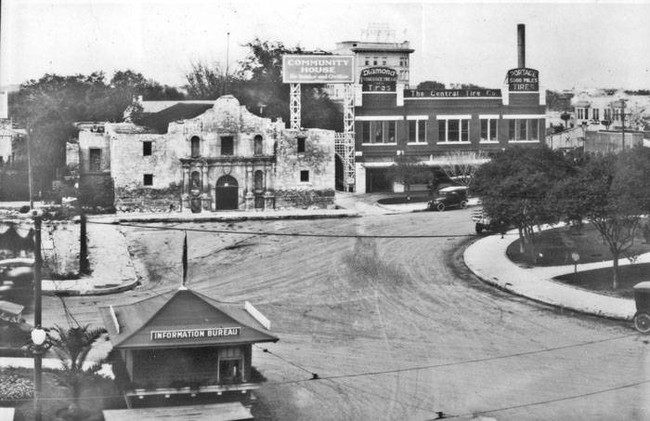
Here’s another, from a couple of decades earlier, therefore closer to the battle time.
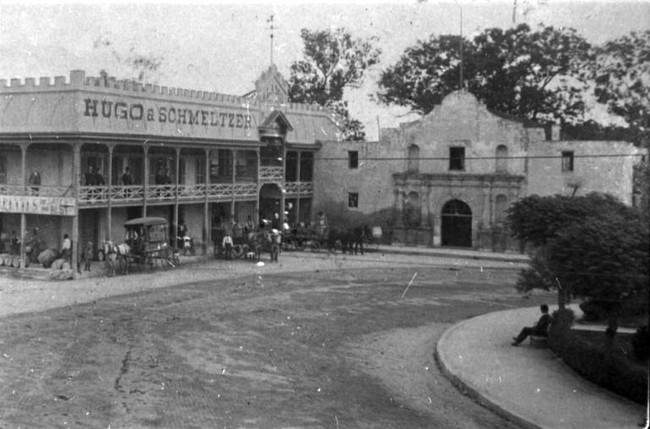
That store was built atop the Long Barrack, where some of the heaviest fighting happened during the 1836 battle. The Long Barrack was also the first hospital ever built in Texas, so its historical importance goes back well before the battle. San Antonio allowed it to be treated like this.
Let’s go back a little farther in time, to 1882. What do we find?
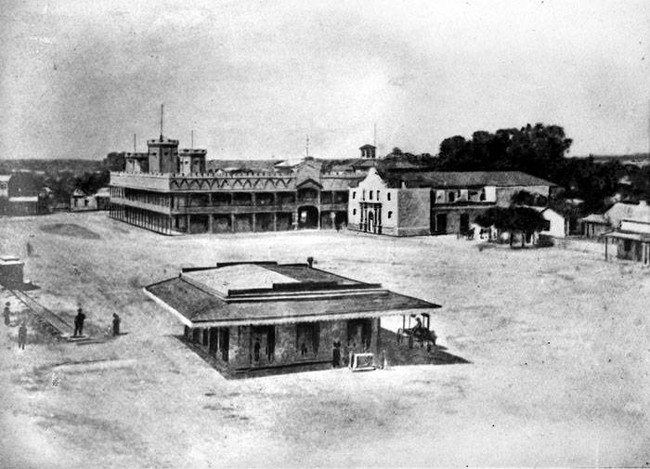
More mistreatment. It’s a miracle the Alamo church and remnants of the Long Barrack survived at all. The Alamo’s walls, its southern gate, and its Low Barrack did not. Santa Anna ordered his troops to do some of that damage, but San Antonio did the rest.
But what about the modern era? San Antonio built a little police box and a fire station on the grounds in the late 19th and early 20th century, the police box being built right into the side of the Alamo church itself.
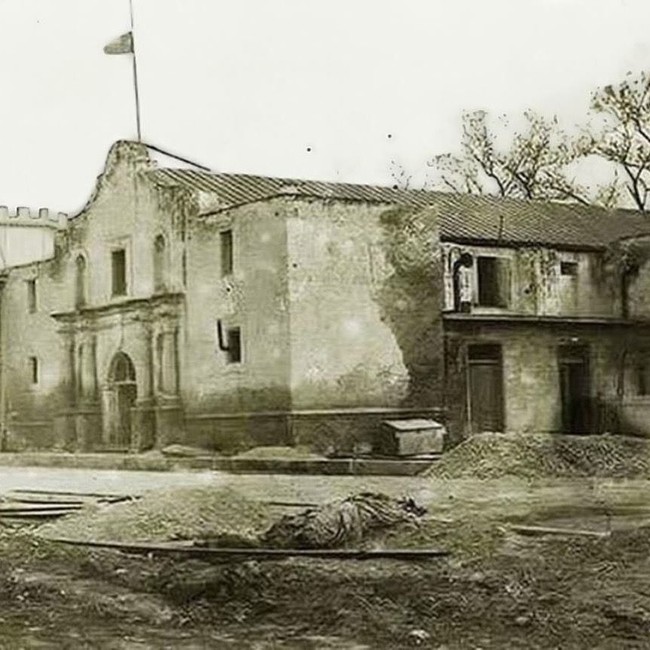
Nowadays locals use the Alamo as a backdrop and for protests, bewildering visitors who can’t make heads or tails of its historic footprint or where key events happened. They arrive hoping to learn about the battle, but find themselves still subjected to chaos and crime, street preachers and vendors. They also wonder why such a famous site is treated so infamously by the city for which it’s known and named. Today we find a committee convened in 2014 under Mayor Julian Castro called the Alamo Citizens Advisory. Castro’s own mother is quoted by the New York Times as despising the Alamo and its defenders. That committee is now apparently working on content for the coming exhibits on Alamo Plaza, which is owned by the city but leased to the state through the General Land Office, and it’s having the bulk of its content discussions in meetings that are closed to the public. The city government cuts the video feed when discussions start, but recent topics include pushing a slavery narrative that’s all but irrelevant to the Alamo and had very little to do with the battle and was not the driving issue of the Texas Revolution. And if you go by San Antonio’s media, the city’s elites are all for it. They’re also pushing a “white supremacy” narrative at the Alamo that’s entirely a modern invention. Worldwide, the Alamo story resonates across national and racial lines, and the pre-World War II Japanese Shiga monument at the Alamo is but one piece of evidence.
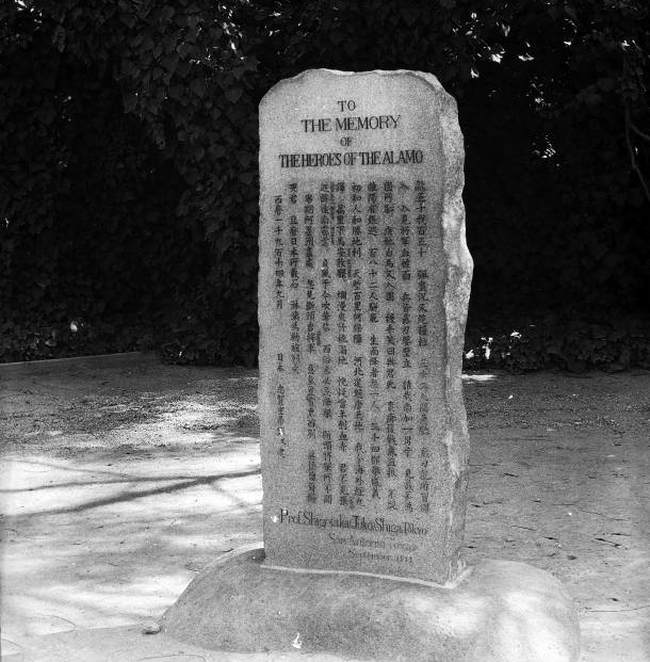
I know well from my years living overseas that once anyone from anywhere finds out you’re from Texas, the first or second question they ask you is something about the Alamo. The whole world knows about it and its valiant defenders. Race doesn’t come up in the discussion.
The authors of the book and their San Antonio media enablers also claim seeing the Alamo as a heroic story is a myth bought and sold by John Wayne and might make you a racist. That’s demonstrably not true. John Wayne made his movie well over a century after the battle and he tried to be accurate, even building a replica of the Alamo out west of San Antonio, but he was also making entertainment. Yet only his movie is singled out as though it should be as accurate as a doctoral dissertation — with San Antonio media criticizing it the most lately. Why?
The following letter was published in the August 30, 1836, edition of the Telegraph and Texas Register — about four months after the battle. It’s in the archives of the University of North Texas Portal to Texas History. The author, Gen. Felix Huston, is writing to Gen. Sam Houston, commander in chief of the Texian and Tejano forces. Independence has just been won at San Jacinto, and Texas faces the huge “Now what?” question. Huston describes the “glories of the Alamo,” giving lie to the notion that the heroic narrative is itself revisionist invented decades after the battle or an invention of later historians and John Wayne to build some “white supremacist” narrative. It wasn’t. The defeat at the Alamo was seen as heroic and historic right after it happened. Bowie and Crockett were two of the most famous men in America years before the battle. Their deaths shocked Americans as news spread across the states from the new republic that was asserting itself between federalist republican America and Napoleonic dictatorship Mexico. The future was not certain and was not yet written. Texas and the Alamo were important as facts on the ground, not just a modern political narrative.
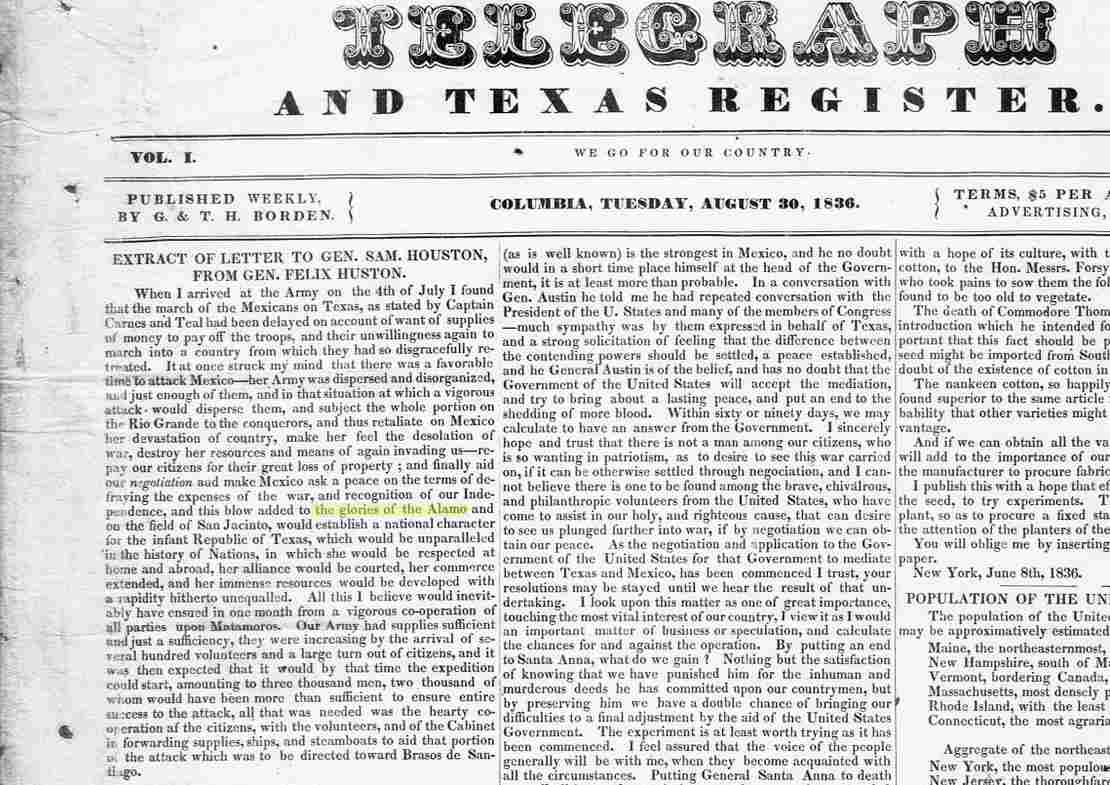
Juan Seguin would echo this, and provide an early if not the earliest casting of Bowie, Crockett, and Travis as heroes in his eulogy to them in 1837. That’s a Tejano holding up the Alamo defenders as brothers and heroes. He would know; he was inside the siege until February 24, 1836, and rode out carrying Travis’s famous letter calling for reinforcements.
In an April 1836 letter, Stephen F. Austin flatly rejected the notion that slavery drove the revolution. He aligned Texas to the American Revolution, which, contrary to the erroneous 1619 Project, was also not about slavery. Austin also castigates the media for getting the story wrong. Some things never change, it seems.
Where are the media in San Antonio, or any of San Antonio’s cultural leaders, to fact-check any of this and keep the Alamo record straight? All of these records and many more are easily available, and most are online. Why isn’t the Alamo City defending its Alamo defenders?
The answer is important, as it sheds some light on what portends for the ongoing Alamo project, in which the Alamo City and its media play key roles.


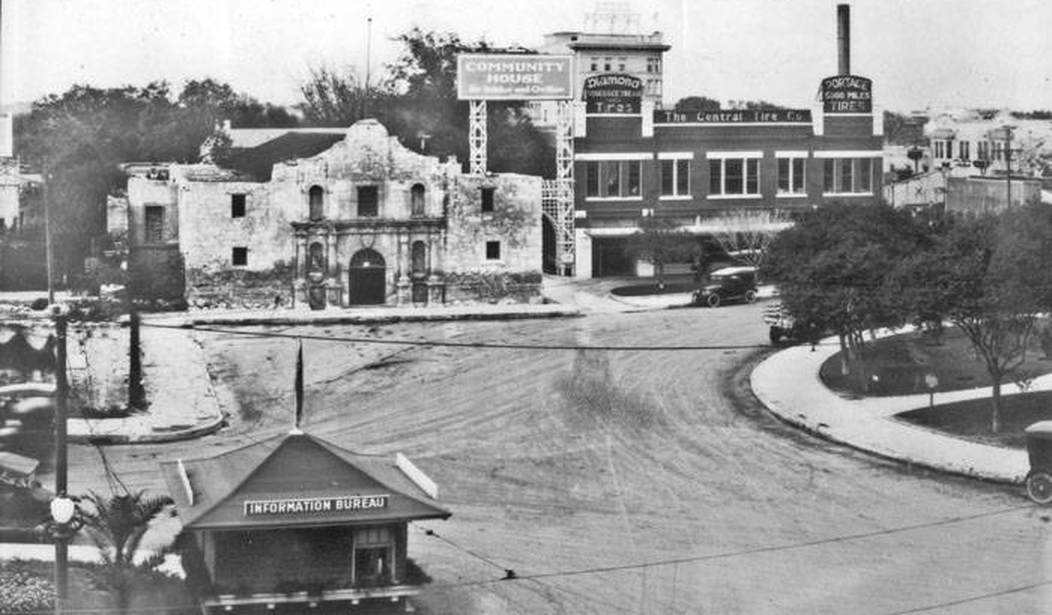



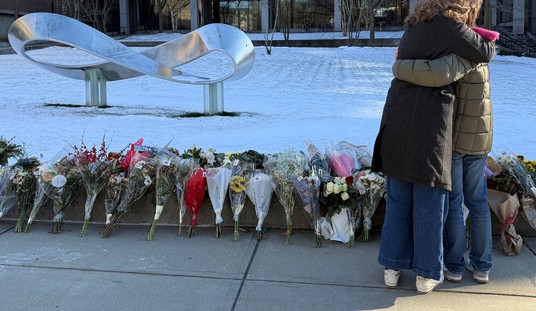


Join the conversation as a VIP Member